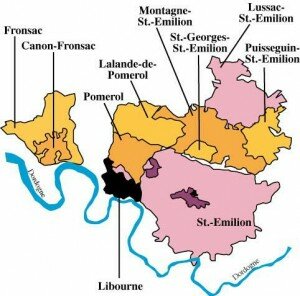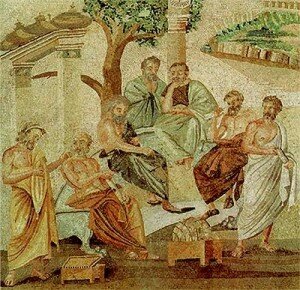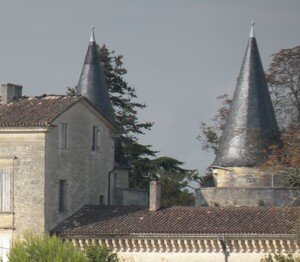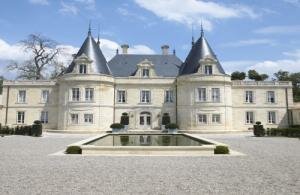 For all its iconic history Saint Emilion is probably one of the most modern and dynamic appellations in Bordeaux. Unlike the rest of Bordeaux it reclassifies its chateaux every 10 years, it saw the Garagiste movement take off and it has its share of rebels, innovators and visionaries.
For all its iconic history Saint Emilion is probably one of the most modern and dynamic appellations in Bordeaux. Unlike the rest of Bordeaux it reclassifies its chateaux every 10 years, it saw the Garagiste movement take off and it has its share of rebels, innovators and visionaries.
It’s an eclectic mix of old and new. Countless tourists, wine lovers amongst them, visit the town (a UNESCO World Heritage site) and tour the chateaux’s tasting rooms (around 103 chateaux are open to the public and the remainder can be visited by appointment).
However there is more to Saint Emilion than first meets the eye. There is another ‘Saint Emilion’, one less known.
 Beyond the medieval town that rests on its Roman remains and picturesque patchwork of vineyards stretching away in the distance lie the outlying satellites – appellations in their own right that can append the name of Saint Emilion.
Beyond the medieval town that rests on its Roman remains and picturesque patchwork of vineyards stretching away in the distance lie the outlying satellites – appellations in their own right that can append the name of Saint Emilion.
Originally there were 6 but over time they have amalgamated into 4: Montagne St Emilion, Puisseguin St Emilion, Lussac St Emilion and Saint Georges St Emilion. (Parsac St Emilion and Sables St Emilion are the 2 that were absorbed).
Before 1936 these satellites were part of the Saint Emilion vineyards and their wines were sold under the Saint Emilion AOC. However thanks to concerns over quality (and more so its reputation) Saint Emilion excluded them from the AOC. The satellites fought back and won the right to add Saint Emilion to their names.
 The satellites are all situated to the north and north east of Saint Emilion itself. They have an ancient past and, like Saint Emilion, they have Roman roots. What’s more, being country estates they can also boast some stunning chateaux.
The satellites are all situated to the north and north east of Saint Emilion itself. They have an ancient past and, like Saint Emilion, they have Roman roots. What’s more, being country estates they can also boast some stunning chateaux.
The smallest satellite is Saint Georges St Emilion and its chateaux can optionally (and are increasingly doing so) use Montagne St Emilion on their labels if they prefer.
The reason behind this is that Saint Georges St Emilion is so tiny that it’s easier for marketing purposes to label under Montagne St Emilion – which incidentally is the largest amongst the satellites. Montagne St Emilion’s name translates as ‘mountain’ but it actually comes from the Latin for “hill”.
 Excavations at the Chateau St Georges in 1843 unearthed a Roman villa complete with the remains of mosaics, a statue of Hercules and parts of musical instruments. It’s said that the hamlet is named after Saint George (famed for slaying the dragon) who was an officer in the Roman army.
Excavations at the Chateau St Georges in 1843 unearthed a Roman villa complete with the remains of mosaics, a statue of Hercules and parts of musical instruments. It’s said that the hamlet is named after Saint George (famed for slaying the dragon) who was an officer in the Roman army.
Chateau Saint Andre Corbin also lies in Saint Georges above the site of a Roman villa. The statues of Venus and Diana discovered there are now held at the Museum of Aquitaine in Bordeaux. Some think that Saint
Andre Corbin could be the original villa of Ausonius, Poet and Prefect of Gaul – the other contender being First Growth Chateau Ausone in Saint Emilion itself.
 Puisseguin St Emilion combines in its name the word ‘Puy’ which means ‘hill’ and ‘Seguin,’ who was a lieutenant under Charlemagne who settled there around the year 800.
Puisseguin St Emilion combines in its name the word ‘Puy’ which means ‘hill’ and ‘Seguin,’ who was a lieutenant under Charlemagne who settled there around the year 800.
Puisseguin too boasts a Roman treasure trove: 17 finely worked silver spoons, marked with the named Pompeianus and a monogram of Christ.
Lussac St Emilion is named after the Roman villa of Lucius (Luccius) and thanks to the standing stone, the Menhir Picampeau, near Chateau Haut Piquat, legend has it that the Druids sacrificed there.
 Wines from these Saint Emilion satellites are less expensive than those from the Saint Emilion AOC itself and are sometimes referred to as rustic.
Wines from these Saint Emilion satellites are less expensive than those from the Saint Emilion AOC itself and are sometimes referred to as rustic.
This is unfair, there are good wines to be found but you need to know where to look. Some well known wine making dynasties have a foot in the satellites – Andre
Lurton’s Chateau de Barbe Blanche lies in Lussac and Chateau Quinault L’Enclos (now owned by Bernard Arnault and Albert Freres, co-owners of
First Growths Chateaux Cheval Blanc and d’Yquem) lies in what used to be Sables Saint Emilion. It seems that the satellites have suffered from being overshadowed by Saint Emilion and, as with most lesser known appellations, they lack decent marketing budgets and strategies.
 Things are changing slowly. As chateaux struggle to increase production and land is limited – and expensive – owners wishing to expand are looking beyond their neighbours and into their backyards for vineyards with potential. Will we see more expansion into the satellites in the future?
Things are changing slowly. As chateaux struggle to increase production and land is limited – and expensive – owners wishing to expand are looking beyond their neighbours and into their backyards for vineyards with potential. Will we see more expansion into the satellites in the future?
At grass roots level the cooperatives are working together and its just been announced that the cooperatives of Montagne St Emilion, Lussac St Emilion, Puisseguin St Emilion and the Union of Producers of Saint Émilion (UDPSE) are to merge.
Alain Naulet, director of UDPSE, has said that the merger is not dictated by financial concerns – all of the cooperatives are doing well – but to cope with land prices, inheritance and, importantly, to expand the range of wines. The new entity will produce more than 102,000 hl (over a million bottles) and have a turnover of 42 million euros.
It’s a case of ‘united we stand, divided we fall’. The merger will ensure that the cooperatives will have a strong presence in the market (60% of the wine produced is sold in France) so they will be looking to increase their exports. The issue of marketing has not been fully discussed as yet so it will be interesting to see how their plans unfold. If successful, we might see more wines from these areas becoming more available over here.
If you’d like to discover more about the Saint Emilion satellites you can check out their websites listed below:
www.montagnesaintemilion.com
www.puisseguin-lussac.com
www.udpse.com
www.saintgeorges-saintemilion.com

